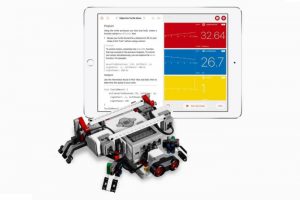12 reasons to learn Apple’s open-source Swift language
- Linh Le

There are lots of reasons why you might want to learn how to build apps using Apple’s open-source Swift language, including ease of use, security and speed
If you are a developer, hope to become a developer, or are thinking about learning how to build apps at home, school or college, here are a few reasons why it may be time to start to learn Apple’s Swift language.
1. Swift is open source
Apple’s decision to make Swift open source has accelerated adoption and development of the language. Swift became one of the top 10 most popular programming languages in the world, according to the monthly TIOBE index in March 2017. It’s also among the ten 10 languages as assessed by the PYPL Popularity of Programming Languages tracker.
2. Swift is easy to learn
Apple built its language to be easy to use and with syntactic simplicity to match Python. What this means is you can begin actually building your apps much faster than you would be able to when learning any other dev platform. Some say that in just 3-4 months, you’ll be able to make real app ideas happen.
3. Swift is fast
People claim code created using Swift is as fast as compiled C code. The language has been developed in such a way as to dispense with tedious tasks, such as entering semi-colons in line breaks in favor of a more responsive development environment. Apple claims search algorithms complete up to 2.6 times faster than Objective-C and up to 8.4 times faster than Python 2.7.
“Swift is a fast and efficient language that provides real-time feedback and can be seamlessly incorporated into existing Objective-C code,” Apple says.
4. Swift is approachable
Coding language doesn’t come naturally. To realize your ideas you must learn the language(s) you need. That’s why Apple has made a huge range of learning resources available, including the Swift Playgrounds app, which helps you learn the concepts behind the language fast.
5. Swift is safe
The Swift team is quite focused on security. That is why when you work with the language, you shouldn’t come across any unsafe code and will use modern programming conventions to help keep watertight security in your apps.
6. Swift is familiar
Apple worked pretty hard to make sure that learning Swift is easy. That’s why while the language dispenses with some of the frustration of other languages, it also continues to use the elements that work. If you’ve developed software before, you’ll see what I am saying when you find Swift’s syntax and concepts closely resemble those you already use.
7. Swift is the future of Apple development
This may sound a little facetious, but Apple is the world’s biggest company, so it has to make sense to use the development platforms it prefers. Since the launch of the App Store, Apple says it has handed over $16 billion to developers in the U.S. alone. Judging by Apple’s success, it makes sense to support their platforms — particularly iOS, but not to ignore macOS, tvOS, watchOS and (one day) carOS.
8. Swift is enterprise ready
Because Swift is open source, you can also use its code on Linux (Apple provides pre-built Ubuntu binaries) and Android. That’s great for developers creating client/server solutions.
You can even begin learning Swift on a browser on any platform using IBM Swift Sandbox and develop and host your Swift server-side applications with IBM Bluemix. IBM has gone so far as to say, “Swift is now ready for the enterprise.”
9. You can experiment
Apple has built a “playground” mode inside Swift (and also offers Swift Playgrounds). You can use the playground to work on app ideas — and because it is sequestered from your actual app, it is really easy to abandon ideas that don’t work (and fast to create the ideas that do work).
10. The economic case for Swift
There are more jobs for developers than there are developers to fill them. That means if you find you have an aptitude for building apps with Swift, there is a reasonable chance you’ll also be able to make a living from your new skill. Swift developers are in demand (one survey claims Swift is one of the most in-demand skills for freelance developers). Indeed.com claims the U.S. average salary for an iOS developer starts at around $115,000/year.
11. Apple’s commitment to Swift
Apple only introduced Swift in 2014, and the language is already about to reach version 4 even while Swift v.5 development has already begun. That’s important because it means (like any other Apple product) the company is offering a clear roadmap for regular improvements to the software, which should reassure developers looking to learn how to use Swift that the language is here to stay.
12. There are plenty of Swift learning resources
There’s a huge host of free resources available that should help you learn how to use Swift to build your app ideas. In addition to a host of writtenand online resources from Apple, you’ll also find courses at Udemy, Treehouse, Coursera and elsewhere.
If you want more hands-on guidance, you’ll also find the App Development with Swift curriculum at more than 30 community college systems across the U.S. in the coming academic year. The course is designed to teach people who’ve never coded before what they need to learn to begin building fully functional apps.
Source : https://www.computerworld.com
